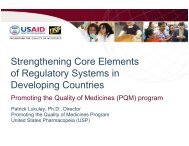Joan Strassmann, "Evolution of cooperation and control of
Joan Strassmann, "Evolution of cooperation and control of
Joan Strassmann, "Evolution of cooperation and control of
Create successful ePaper yourself
Turn your PDF publications into a flip-book with our unique Google optimized e-Paper software.
�������������������������������������������<br />
��������������������
��������������������������������������<br />
Alleles held at<br />
equilibrium by<br />
balancing selection<br />
��������������������
��������������������������������������<br />
Alleles held at<br />
equilibrium by<br />
balancing selection<br />
Neutral mutation<br />
��������������������
��������������������������������������<br />
Alleles held at<br />
equilibrium by<br />
balancing selection<br />
Neutral mutation<br />
��������������������<br />
Lost by drift
��������������������������������������<br />
Alleles held at<br />
equilibrium by<br />
balancing selection<br />
Neutral mutation<br />
��������������������<br />
Lost by drift<br />
Increased<br />
by drift
�����������������������������������������<br />
�����������������<br />
Alleles held at<br />
equilibrium by<br />
balancing selection
�����������������������������������������<br />
�����������������<br />
Alleles held at<br />
equilibrium by<br />
balancing selection
�����������������������������������������<br />
�����������������<br />
Alleles held at<br />
equilibrium by<br />
balancing selection
�����������������������������������������<br />
�����������������<br />
Alleles held at<br />
equilibrium by<br />
balancing selection
�����������������������������������������<br />
�����������������<br />
Alleles held at<br />
equilibrium by<br />
balancing selection
�����������������������������������������<br />
�����������������<br />
Alleles held at<br />
equilibrium by<br />
balancing selection
������������������������������������������<br />
�������������������<br />
Minority neutral variants<br />
Favorable mutation
����������������������������������������<br />
���������<br />
selection<br />
Minority neutral variants<br />
Favorable mutation
���������������������������������������������������������<br />
TgrB1 -- 226 polymorphic positions (n=30)<br />
N sig seq<br />
Ig-1 Ig-2 Ig-3 TM C<br />
TgrC1 -- 319 polymorphic positions (n=29)<br />
N sig seq Ig-1 Ig-2 Ig-3 Ig-4 Ig-5 Ig-6<br />
TM C<br />
Benabentos et al., 2009 Current Biol. 19(7):567-72.<br />
Immunoglobulin-like domain
����������������������������������������������������<br />
�����������������������<br />
TgrD1 -- 9 polymorphic positions out <strong>of</strong> 15 wild strains<br />
TgrE1 --10 polymorphic positions out <strong>of</strong> 6 wild strains<br />
Benabentos et al., 2009 Current Biol. 19(7):567-72.
�����������������������<br />
Genetic distance from AX4<br />
Microsatellite-based<br />
r = 0.773<br />
P
������������������������������������������������<br />
qRT-PCR pr<strong>of</strong>ile in Ax4<br />
Ax4<br />
tgrB1 -<br />
tgrC1 -<br />
12h<br />
17h<br />
0.5mm
��������������������������������������������������<br />
��������<br />
����� � ����� ����� � �����<br />
�������������������
���������������������������������������������<br />
�����������������������������������������������<br />
�������������������������������������������<br />
����������
���������������������������������������������������<br />
Kin recognition suggests<br />
that cheating was<br />
important<br />
Prediction:<br />
If ability to cheat is a part<br />
<strong>of</strong> evolved fitness, then<br />
that ability should<br />
decline when selection is<br />
removed <strong>and</strong> drift<br />
increased.
��������������������<br />
������������<br />
Sara Fox<br />
• ��������������������������������<br />
�����������������������<br />
�������������<br />
• �����������������������������<br />
����������������������<br />
• ������������������������<br />
���������������������
Control lines do compete evenly against<br />
ancestor<br />
����������<br />
<strong>control</strong> line<br />
Ancestor-gfp<br />
Percent change <strong>of</strong> evolved lines compared to ancestor
Mutation accumulation lines highly variable;<br />
tend to lose against ancestor<br />
����������<br />
MA line<br />
Ancestor-gfp<br />
Percent change <strong>of</strong> evolved lines compared to ancestor
�������������������������������<br />
����������������������������<br />
�����������������������������<br />
����������������������������<br />
����������������������������<br />
����������������������������������<br />
�����������������������������<br />
�
���������������������������������������������<br />
��������������������������������������������������<br />
�������������������������������������
Sequence another species for comparison<br />
Schaap et al. 2006 Science
������������������������������<br />
��������������������������<br />
���������������������������������������������<br />
Xiangjun Tian
��������������������������������<br />
��������������������������������
���������������������������<br />
����������������������<br />
������������������������<br />
�����<br />
��������<br />
�������������������������� �� �������� ��������������������<br />
��������� ���������<br />
Kuzdzal-Fick, Fox, <strong>Strassmann</strong> & Queller, Science 334:1548
Select for success <strong>of</strong> new natural<br />
cheater mutants under low<br />
��������<br />
relatedness<br />
���������<br />
Kuzdzal-Fick
���������������������������������������������<br />
������������������������������������������������<br />
�����������<br />
�<br />
�������������������������������������<br />
���������������������������������
������������������������������������������<br />
����������������������������������������<br />
������������������������<br />
�<br />
����������<br />
�����������������������������
��������������������������������<br />
�������������������������<br />
����
�����������������������������������<br />
����
�����������������������������������������������<br />
������������������������������������<br />
����
��������������������������<br />
�� ���������������������������������������������������������������<br />
����
Cooperation is <strong>of</strong>ten treated as a<br />
topic apart, but it is basic to the<br />
evolution <strong>of</strong> life
In the major transitions in evolution,<br />
conflict must be resolved for formerly<br />
independent units to become selected<br />
together<br />
John Maynard Smith, Eörs Sathmáry<br />
Chromosome Prokaryote Eukaryote Multicellular<br />
Cell<br />
Cell<br />
Organism<br />
Colonial<br />
Superorganism
����������������������������<br />
�����������������������������������<br />
�������������������������������������<br />
��������������
����������������������������������<br />
����
��������������������������������������������<br />
High <strong>cooperation</strong> among parts, Low actual conflict among parts<br />
Consolidation <strong>of</strong> adaptations making the organism a unit <strong>of</strong> near unanimous<br />
design<br />
Queller & <strong>Strassmann</strong> 2009. Phil. Trans. R. Soc.,<strong>Strassmann</strong> & Queller 2010. <strong>Evolution</strong>
1. What are the possible fitness<br />
benefits to grouping?
1. What are the possible fitness<br />
benefits to grouping?
1 a. Rise above the hazards <strong>of</strong> the soil,<br />
dispersal is facilitated
Distance<br />
travelled<br />
(cm)<br />
1b. Larger groups move farther<br />
8<br />
7<br />
6<br />
5<br />
4<br />
3<br />
2<br />
1<br />
0<br />
0 1 2 3 4 5 6<br />
Slug size<br />
(total volume <strong>of</strong> spores producted mm 3 )<br />
Spearman rank correlation,<br />
p
Dicty slugs<br />
�����������������������������������<br />
�������������������������������<br />
Bacteria slurry<br />
��������<br />
• ��������������������������������������
1d. Exploit other cells to make<br />
better spores<br />
• �����������������������������������������������<br />
���������������������
2a. Exploitation by some clones<br />
avoiding the sterile, altruist role<br />
<strong>of</strong> stalk<br />
For 12 mixtures, we genotyped the head <strong>and</strong> tail <strong>of</strong><br />
7 individual slugs from each plate (<strong>Strassmann</strong> et<br />
al. Nature, 2000)
Within 2-clone chimeras, in 6/12 mixes<br />
one contributes more to spore than to stalk<br />
clone 1 clone 2<br />
NC60.1<br />
NC105.1<br />
NC28.1<br />
NC63.2<br />
NC98.1<br />
NC101.1<br />
NC94.2<br />
NC85.1<br />
NC75.2<br />
NC4<br />
NC34.1<br />
NC85.2<br />
T<br />
T<br />
The image<br />
The image cannot be displayed. Your computer<br />
The image cannot be<br />
T<br />
0.0 0.2 0.4 0.6 0.8 1.0<br />
Proportion <strong>of</strong> clone 1<br />
NC60.2<br />
NC34.1<br />
NC28.2<br />
NC69.1<br />
NC70.1<br />
NC99.1<br />
NC94.1<br />
NC85.2<br />
NC28.1<br />
NC47.2<br />
NC34.2<br />
NC39.1<br />
% clone 1 % clone 2<br />
Spores : top bar<br />
Stalk : bottom bar<br />
Neutral Prediction:<br />
1 2<br />
0.0 0.2 0.4 0.6 0.8 1.0<br />
<strong>Strassmann</strong>, Zhu, <strong>and</strong><br />
Queller, Nature, 2000
Within 2-clone chimeras, in 6/12 mixes<br />
one contributes more to spore than to stalk<br />
clone 1 clone 2<br />
NC60.1<br />
NC105.1<br />
NC28.1<br />
NC63.2<br />
NC98.1<br />
NC101.1<br />
NC94.2<br />
NC85.1<br />
NC75.2<br />
NC4<br />
NC34.1<br />
NC85.2<br />
T<br />
T<br />
The image<br />
The image cannot be displayed. Your computer<br />
The image cannot be<br />
T<br />
0.0 0.2 0.4 0.6 0.8 1.0<br />
Proportion <strong>of</strong> clone 1<br />
NC60.2<br />
NC34.1<br />
NC28.2<br />
NC69.1<br />
NC70.1<br />
NC99.1<br />
NC94.1<br />
NC85.2<br />
NC28.1<br />
NC47.2<br />
NC34.2<br />
NC39.1<br />
% clone 1 % clone 2<br />
Spores : top bar<br />
Stalk : bottom bar<br />
Neutral Prediction:<br />
1 2<br />
0.0 0.2 0.4 0.6 0.8 1.0<br />
<strong>Strassmann</strong>, Zhu, <strong>and</strong><br />
Queller, Nature, 2000
�������������������������������<br />
�����������������������������������<br />
��������������
2b. Cells that have starved 4 hours are more likely<br />
to become spores<br />
R<strong>and</strong>om<br />
Stalk<br />
Spores<br />
Kudzdal-Fick et al. Biology Letters 2010<br />
*<br />
*Fisher’s PLSD p
������������������������������������������������<br />
�������������������������������������������<br />
����������������������������������������<br />
• ������������������<br />
– �������������������<br />
�������������������������<br />
���������������<br />
– �����������������������<br />
���������������<br />
Huang et al. 1997
2c. Do chimeras move as far<br />
as pure clones?
Mean distance migrated (cm)<br />
5<br />
4<br />
3<br />
2<br />
1<br />
0<br />
Chimaeric slugs move less far<br />
1 2 5 10<br />
Number <strong>of</strong> clones in slug<br />
10 different single clones<br />
10 different clone pairs<br />
1 mix <strong>of</strong> five clones (5 reps)<br />
1 mix <strong>of</strong> ten clones (5 reps)<br />
N=30, ANOVA, p
2c. Chimeras move less far<br />
than pure clones, for a given<br />
number <strong>of</strong> cells<br />
Foster et al., Royal Society Proceedings B, 2002<br />
Kevin Foster<br />
Angelo Fortunato
There are benefits <strong>and</strong> costs to<br />
grouping, making this an excellent<br />
system for studying sociality
����������������������������<br />
• ����������������������<br />
���������������������������<br />
����������<br />
• ����������������������������<br />
����������<br />
�
�����������������������������������������������<br />
�����������������������<br />
�� �� �� �� �� �� �� �� �� ��� ��� ��� ��� ��� ��� ��� ��� ��� ��� ��� ��� ��� ��� ��� ���<br />
��������������
����������������������������������������������<br />
����������������������������������������������<br />
���������������������������������������������<br />
Transect<br />
location�<br />
Number�<br />
10�<br />
8�<br />
6�<br />
4�<br />
2�<br />
0�<br />
�� �� �� �� �� �� �� �� �� ��� ��� ��� ��� ��� ��� ��� ��� ��� ��� ��� ��� ��� ��� ��� ���<br />
isolates�<br />
clones�<br />
��� ��� ��� ��� ��� ��� ��� ���������������������������������������������������������������������������<br />
��������������������������������������������������������
����������������������������<br />
• ����������������������<br />
���������������������������<br />
����������<br />
• ����������������������������<br />
����������<br />
�
��������������������������������<br />
����������������������������<br />
Genetic distance from AX4<br />
Microsatellite-based<br />
r = 0.773<br />
P
����������������������<br />
��������������<br />
• ����������������������������������������������<br />
������<br />
• ������������������������������������������������<br />
������<br />
• ��������������������������������������<br />
��������������������������������<br />
• ������������������������������������<br />
���������������
�������������������������������������������<br />
������������������������������������
5. How common are genes<br />
involved in cheating?
Great molecular biology collaborators<br />
Adam Kuspa Gadi Shaulsky
Do a selection on a pool <strong>of</strong><br />
insertion mutants.
Does the interaction affect life history<br />
traits?<br />
Non-farmer<br />
Fb’s:<br />
Farmer<br />
5 days <strong>of</strong> development<br />
Fb’s: Bacteria<br />
3 mm<br />
Farmer clones enter the social stage<br />
before all food is exhausted<br />
����
����������������������������<br />
������������������������������<br />
Dicty gene<br />
Blasticidin<br />
BamHI<br />
Bs R<br />
pBSR1<br />
4.10 Kb<br />
REMI knockouts<br />
Amp R<br />
DpnII<br />
linearize plasmid <strong>and</strong> insert<br />
into r<strong>and</strong>om spot in Dicty<br />
Ampicillin
Selection to find cheater mutations<br />
10,000 REMI generated<br />
mutants<br />
1 round<br />
SM plate SM plate
Select for cheaters that get into<br />
spores instead <strong>of</strong> stalk<br />
Generation 1<br />
Generation 20
Selected<br />
population<br />
Test for cheating<br />
mix 1:1 with wildtype AX4,<br />
labeled with green flourescent protein<br />
AX4<br />
GFP
����������������������������������<br />
Santorelli et al. Nature, 2008
��������������������������������������������<br />
��������������������������������������������������������<br />
������������������������������������������������������<br />
��������������������������������������������������������
Dictyostelium discoideum as a social organism<br />
1. Benefits to grouping<br />
2. Costs to grouping<br />
3. Relatedness <strong>and</strong> kin discrimination<br />
4. Experimental evolution: Impact <strong>of</strong><br />
low relatedness<br />
5. Genes involved in cheating are<br />
common <strong>and</strong> show rapid evolution.
In the lab, on agar <strong>and</strong> on soil,<br />
clones mix readily.
1) Is the farming trait stable?<br />
Dictyostelium discoideum<br />
Bacteria<br />
����
Farmers regain their association with bacteria<br />
after curing with antibiotics; non-farmers do not<br />
acquire an association<br />
%<br />
Reassociation<br />
100<br />
80<br />
60<br />
40<br />
20<br />
0<br />
Farmers Non-farmers<br />
10 r<strong>and</strong>om sori; 4 farmers <strong>and</strong> 4 non-farmers;<br />
F 1,6 =48.864, p
% occurrence<br />
2a) What proportion <strong>of</strong> clones are farmers?<br />
100<br />
80<br />
60<br />
40<br />
20<br />
0<br />
5/14<br />
3/9<br />
Virginia<br />
1/3<br />
Minnesota<br />
Farmers <strong>and</strong> partners isolated from 4 independent collections <strong>of</strong> soil samples<br />
4/9<br />
Non-farmer<br />
Farmer<br />
Average<br />
proportion<br />
<strong>of</strong> farmers<br />
35.5%
�����������������������������������<br />
94<br />
99<br />
99<br />
96<br />
93<br />
QS8<br />
QS21<br />
QS14<br />
QS11<br />
QS18<br />
QS22<br />
QS15<br />
QS9<br />
QS23<br />
disc NW 001852778<br />
QS4<br />
QS1<br />
QS12<br />
QS6<br />
QS17<br />
citr DQ340385


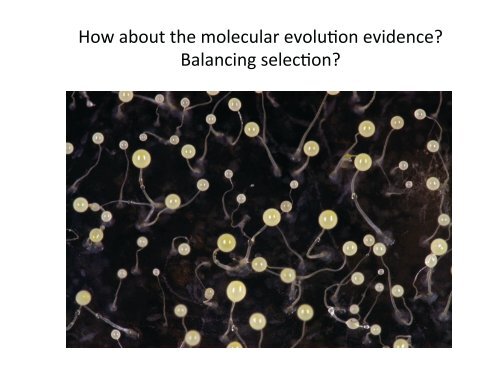
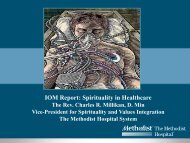
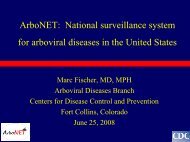


![Barry Davis Presentation.ppt [Read-Only] - Institute of Medicine](https://img.yumpu.com/31160415/1/190x146/barry-davis-presentationppt-read-only-institute-of-medicine.jpg?quality=85)

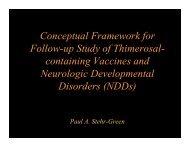
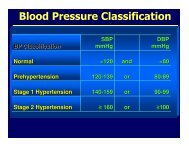
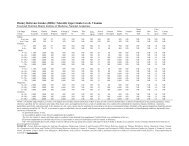


![Diekema.ppt [Compatibility Mode] - Institute of Medicine](https://img.yumpu.com/5085552/1/190x146/diekemappt-compatibility-mode-institute-of-medicine.jpg?quality=85)
